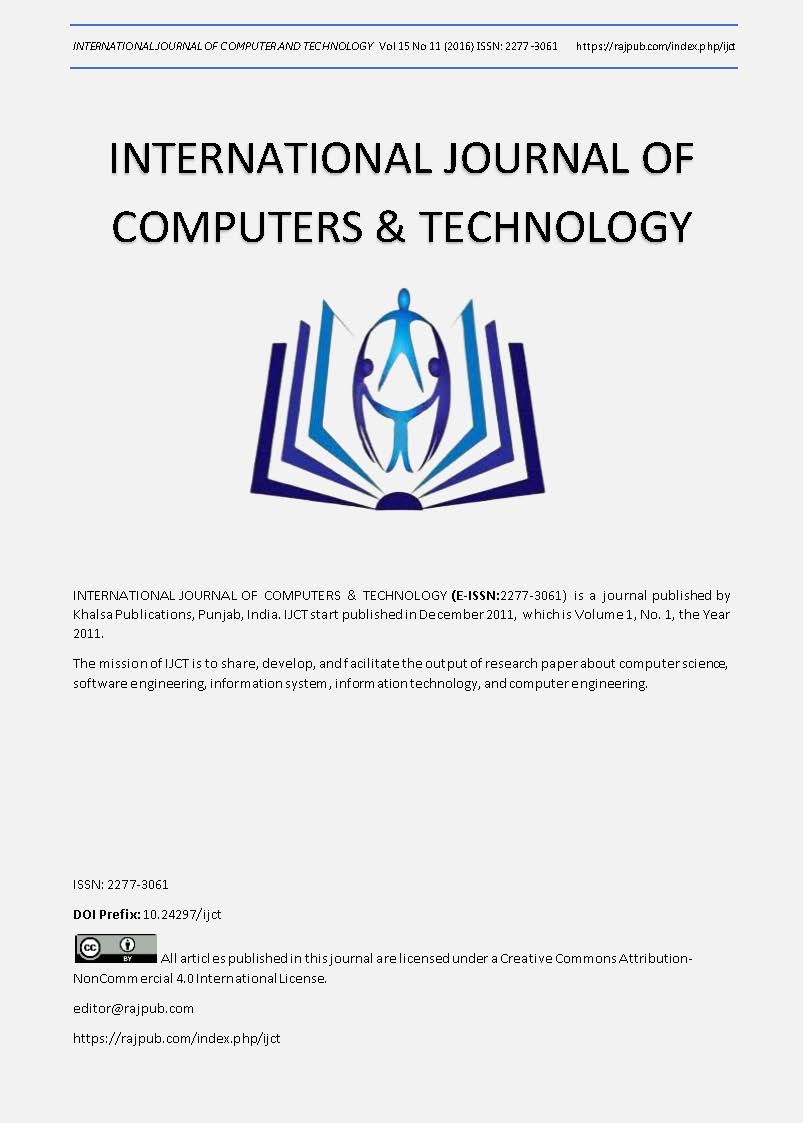Choosing Automated or Manual Testing in Extreme Programming with the Analytical Hierarchy Process
DOI:
https://doi.org/10.24297/ijct.v15i11.4360Keywords:
Extreme programming, Test-Driven Development, Testing techniques, Analytic Hierarchy Process.Abstract
Extreme Programming (XP) has been called one of the most successful methods in software development. XP comprises a set of practices designed to work together to provide value to the customer. During the XP lifecycle, developers and customers regularly encounter situations in which they need to make decisions or evaluate factors. This affects the development process and team productivity. We propose to use the Analytic Hierarchy Process (AHP) as a means to systematize and streamline the decision process. AHP eliminates conflict because it elaborates input from every member of the team. Thus, the adoption of AHP can help accomplish XP values and fulfill team needs. This paper presents an example of applying the AHP to decide which testing technique to adopt depending on a series of project-specific parameters.Downloads
Download data is not yet available.
References
[1] Beck, K, “Test-Driven Development by Exampleâ€, Addison-Wesley Professional; 1 edition, Nov 2002.
[2] Boby Georgea, Laurie Williams, “A Structured Experiment of Test-Driven Developmentâ€,Information and Software Technology, vol. 46, no. 5, April 2004, pp.337–342
[3] Thirumaslesh Bahat , Nachiappan Nagappan, “Evaluating the efficacy of Test-Driven Development: Industrial Case Studiesâ€, in Proceedings of the 2006 ACM/IEEE international symposium on Empirical software engineering, 2006, pp. 356 – 363.
[4] Brain Marick,â€When Should a Test Be Automatedâ€, Reliable Software Technologies, a conference produced by Software Quality Engineering, STAREAST ‘99.
[5] Automated Testing in Agile Environments, <http://www.versionone.com> (accessed 3.5.2013).
[6] What is the role of Manual Testing in an Agile World, Emergence Tech Training, <http://emergencetechtraining.com> [accessed 5.3 2012].
[7] Lisa Crispin, Tip House, “Testing Extreme Programmingâ€, Addison-Wesley Professional Pub, October 25, 2002. [8] Vasudeva Naidu, “Manual Testing vs. Automated Testing: A Decision Pointâ€, Search Software Quality,
<www.searchsoftwarequality.com> (accessed 3.6.2013).
[9] David W. Johnson, “ Is Automated Testing Replacing the Software Tester?†Search Software Quality, 2011. [10] Saaty TL.The Analytic Hierarchy Process, McGraw-Hill, New York, (1980).
[11] Saaty, T.L. How to Make a Decision: the Analytic Hierarchy Process, Interfaces, Vol. 24, No. 6, pp.19--43 (1994).
[12] Alshehri, Sultan. Aljuhani, Abdulmajeed. “Ranking The Refactoring Techniques Based on The External Quality Attributesâ€. International Journal of Research in Engineering and Science (IJRES). Volume 3 Issue 6 ! June 2015 ! PP.74-87.
[13] Raed Shatnawi, Wei Li, “ An Empirical Assessment of Refactoring Impact on Software Quality Using Hierarchical Quality Modelâ€, International Journal of Software Engineering and Its Applications, vol. 5, no.4, October 2011.
[14] Robert K. Yin, “Qualitative Research from Start to Finishâ€, The Guilford Press; 1 edition (October 7, 2010)
[15] Rudiger, Lincke, “How do PhD Students Plan and Follow-up their Work? – A Case Studyâ€, School of Mathematics and Systems Engineering, University of Sweden.
[16] Robert K. Yin, “Case Study Research: Design and Methods: Applied Social Research Methodsâ€, SAGE Publications, Inc; 2nd edition (March 18, 1994).
[2] Boby Georgea, Laurie Williams, “A Structured Experiment of Test-Driven Developmentâ€,Information and Software Technology, vol. 46, no. 5, April 2004, pp.337–342
[3] Thirumaslesh Bahat , Nachiappan Nagappan, “Evaluating the efficacy of Test-Driven Development: Industrial Case Studiesâ€, in Proceedings of the 2006 ACM/IEEE international symposium on Empirical software engineering, 2006, pp. 356 – 363.
[4] Brain Marick,â€When Should a Test Be Automatedâ€, Reliable Software Technologies, a conference produced by Software Quality Engineering, STAREAST ‘99.
[5] Automated Testing in Agile Environments, <http://www.versionone.com> (accessed 3.5.2013).
[6] What is the role of Manual Testing in an Agile World, Emergence Tech Training, <http://emergencetechtraining.com> [accessed 5.3 2012].
[7] Lisa Crispin, Tip House, “Testing Extreme Programmingâ€, Addison-Wesley Professional Pub, October 25, 2002. [8] Vasudeva Naidu, “Manual Testing vs. Automated Testing: A Decision Pointâ€, Search Software Quality,
<www.searchsoftwarequality.com> (accessed 3.6.2013).
[9] David W. Johnson, “ Is Automated Testing Replacing the Software Tester?†Search Software Quality, 2011. [10] Saaty TL.The Analytic Hierarchy Process, McGraw-Hill, New York, (1980).
[11] Saaty, T.L. How to Make a Decision: the Analytic Hierarchy Process, Interfaces, Vol. 24, No. 6, pp.19--43 (1994).
[12] Alshehri, Sultan. Aljuhani, Abdulmajeed. “Ranking The Refactoring Techniques Based on The External Quality Attributesâ€. International Journal of Research in Engineering and Science (IJRES). Volume 3 Issue 6 ! June 2015 ! PP.74-87.
[13] Raed Shatnawi, Wei Li, “ An Empirical Assessment of Refactoring Impact on Software Quality Using Hierarchical Quality Modelâ€, International Journal of Software Engineering and Its Applications, vol. 5, no.4, October 2011.
[14] Robert K. Yin, “Qualitative Research from Start to Finishâ€, The Guilford Press; 1 edition (October 7, 2010)
[15] Rudiger, Lincke, “How do PhD Students Plan and Follow-up their Work? – A Case Studyâ€, School of Mathematics and Systems Engineering, University of Sweden.
[16] Robert K. Yin, “Case Study Research: Design and Methods: Applied Social Research Methodsâ€, SAGE Publications, Inc; 2nd edition (March 18, 1994).
Downloads
Published
2016-08-23
How to Cite
Alshehri, S., Aljuhani, A., & Benedicenti, L. (2016). Choosing Automated or Manual Testing in Extreme Programming with the Analytical Hierarchy Process. INTERNATIONAL JOURNAL OF COMPUTERS &Amp; TECHNOLOGY, 15(11), 7243–7252. https://doi.org/10.24297/ijct.v15i11.4360
Issue
Section
Research Articles









